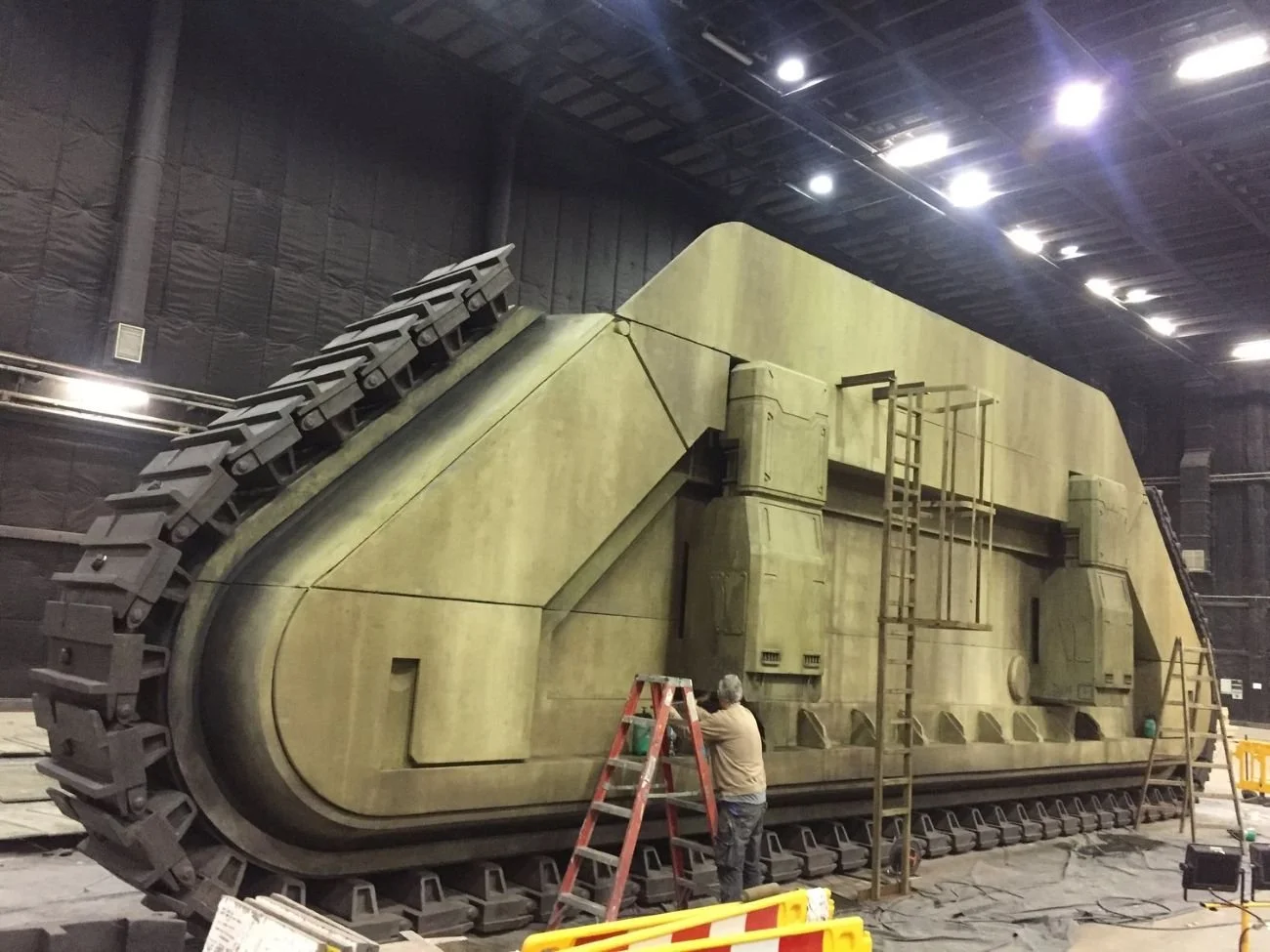Brad Ricker and Set Design
Brad Ricker is award-winning art director and production designer. He has worked on hit movies such as Don’t Look Up, Black Panther: Wakanda Forever, Spider-man: Homecoming, Dune, Vice, Suicide Squad, and Inception, as well as with famous directors such as Christopher Nolan, Ryan Coogler, Adam McKay, Denis Villeneuve, David Ayer, and John Watts. Mr. Ricker’s career stemmed from a love for movies combined with a background studying architecture, photography, painting, and film. He initially got involved with filmmaking by shooting commercials and short films with friends, then moved to New York to pursue a career in painting. He later moved to Los Angeles where he became the extremely successful and well-regarded art director he is known as today.
Mr. Ricker told us about the communication process between himself, Christopher Nolan, the location manager, and the special effects personnel during the making of the runaway train scene.
What is Set Design?
Set designers spend just as much time planning out scenes and collaborating with other production team members such as location managers and producers as they do actually creating said props and sets. A set designer must feel out what the director wants out of a scene and craft it to match the script. They must find ways to work with the locations chosen for a scene. For instance, designing the set for a cozy cottage on a controlled movie stage will be different from designing the same cozy cottage in a real mountain range. Communication, problem solving skills, and persistence are just some of the many necessary attributes when envisioning a strong set designer.
What Goes into Making a Movie?
The New York Film Academy recognizes 7 steps that make up the filmmaking process:
The Idea.
The Script - the blueprint used to “build” the movie.
The Story Board - “a sequence of drawings that represent the shots you plan to film, and can be a critical part of the filmmaking process” (NYFA, 2025).
Cast and Crew.
Shooting Locations.
Filming.
Post Production - smoothing rough cuts, addition of sound effects, visual effects, music, filters, etc to bring the movie together.
Mr. Ricker showed us the timeline and scheduling documents he used when working as the Supervising Art Director on Inception. It was exciting to get a behind-the-scenes look at the detailed planning that went into such a great film.
Legal Issues in Set Design
Set design is perhaps one of the most “at risk” aspects of movie production regarding legal issues. One such significant issue is the risk of copyright infringement through the art pieces used to decorate a set. Often, interior designs of houses and buildings may feature artworks such as paintings and sculptures that require the consent of and permission to use such artwork from the copyright holder. This adds an extra step to the design process rather than just being able to take an artwork and use it no questions asked. A similar issue is the risk of trademark infringement. This relates to any logos, brands, slogans, etc. that may be seen on items in or on the set. This could include shoe logos, branded food items, and even some buildings. This goes to show that set designers must also be cognizant of legal risks regarding the sets they create rather than just the production of a quality set. Mr. Ricker explained these legal issues to us, using the scene in the dining room of the Japanese castle in Inception as an example.
Practical vs. CGI Effects
There is a big debate between the use of CGI and practical effects. The argument for CGI focuses around its cost efficient, and high quality render abilities. CGI also allows for difficult or time consuming shots to be more easily fulfilled and large-scale shots are often much more difficult to discern CGI from practical. Perhaps the biggest pro for CGI is eliminating the need to travel beyond a set stage to get the shots needed. On the flip side, practical effects are often preferred by directors and visual effect coordinators. Those coordinating and directing a movie want positive critic feedback and one big complaint from critics is “the overuse of CGI and how it can detract from the authenticity of a scene” (LAFS, 2025). The use of practical effects also offers a real interactive environment or object for the actors to interact with. As well, the inverse of CGI is true for practical effects in terms of scene scale. Although CGI can create high quality renderings, the small scale, up close details are much higher quality when done practically.
Image of the wheels of a spice harvester from the movie Dune courtesy of Brad Ricker.
References
New York Film Academy. “Student Resources.” Student Resources, 6 Nov. 2018, www.nyfa.edu/student-resources/the-beginners-guide-to-the-filmmaking-process/.
IMDb. “Brad Ricker - Art Director, Art Department, Production Designer.” IMDb, 2021, www.imdb.com/name/nm0725469/?ref_=nmbio_ov. Accessed 1 May 2025.
Ricker, Brad. Brad Ricker, 2017, www.bradricker.net/. Accessed 1 May 2025.
Get into theatre. “What Does a Set Designer Do?” Get into Theatre, 27 Aug. 2019, getintotheatre.org/blog/what-does-a-set-designer-do-in-theatre/.
Deguzman, Kyle. “Set Design in Film — Process and Purpose Explained.” StudioBinder, 15 Oct. 2023, www.studiobinder.com/blog/what-is-set-design-in-film-definition/.
Vakhtin, Dmitry. “Filmmaking Laws: Understanding Permits, Copyrights, and Contracts - Filmustage Blog.” Filmustage, 19 July 2023, filmustage.com/blog/filmmaking-laws-understanding-permits-copyrights-and-contracts/.
Kamps, Laura. Art behind the Scenes: The Rights of Artists for Works of Visual Art Used in Television and Motion Picture Set Decoration. https://jost.syr.edu/wp-content/uploads/art-behind-the-scenes-the-rights-of-artists-for-works-of-vis.pdf
The Los Angeles Film School. “Practical Effects vs. CGI - the Los Angeles Film School.” The Los Angeles Film School, 16 Oct. 2019, www.lafilm.edu/blog/practical-effects-vs-cgi-2/.
